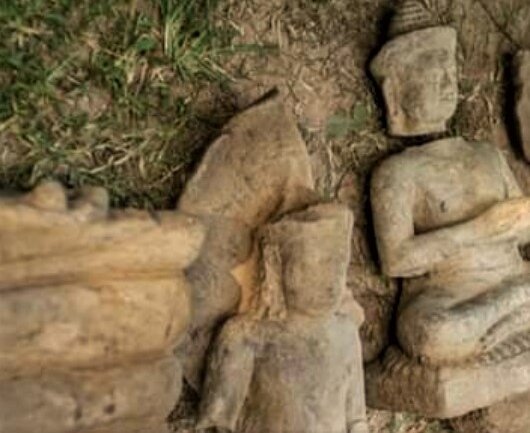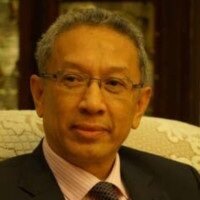Bhaisajyaguru and Tantric Medicine in Jayavarman VII Hospitals
by Rethy Kieth Chhem
Tantrism influence in Angkor-era medical theories and practice.

Publication: Siksācakr (CKS Review), Vol. 7
Published: 2005
Author: Rethy Kieth Chhem
Pages: 30
Language : English
How medicine was practiced in the numerous hospitals developed at the end of the 12th century? According to the author, Tantric-inspired medical treatments appeared in the region much earlier, to Chenla, when "the Indian monk Puayodaya was invited by Chenla rulers to study the medicinal herbs in the kingdom, in 663 CE. During his multiple visits in Chenla, Puåyodaya shared his knowledge in Sanskrit, Tantric Buddhism theories and herbal medicine with the local “great masters"."
"The best evidence to support the practice of Buddhist medicine at Angkor Thom is the use of the five basic medicines in Tà Prohm and Preah Khan royal monasteries. These medicines include clarified butter, fresh butter, oil, honey and molasses, and appear always together in a set of five items, four times in the Tà Prohm inscription and six times in the inscription of Preah Khan" studied by George Coedès.
Bhaisajyaguru, the healing Buddha, is a popular Buddha representation in China, Japan and Tibet. The foundation stela of the Jayavarman VII hospital stated that each chapel should host a triad of Buddhist divinities, with Bhaisajyaguru at the center.
(Main photo: Healing Buddha statues at Tonle Snguot Angkorean site)
Tags: medicine, healthcare, Jayavarman VII, Tantric Buddhism, hospitals
About the Author

Rethy Kieth Chhem
Dr Rethy Chhem (1952, Phnom Penh) is a medical doctor, biomedical scientist, science diplomat, historian of medicine and educationalist He has been a professor of radiology for 28 years, teaching in Canada, Singapore, Austria and Japan.
Dr Chhem is the Executive Director of the Cambodia Development Resource Institute (CDRI), a leading think-tank in Cambodia and the ASEAN region. In 2018, he was appointed special Health Advisor to Cambodia Prime Minister Samdech Hun Sen. He is also co-leading the Angkor Medieval Hospitals Archaeological Project.
He was the Chairman of the Medical Imaging Department at Western University (Canada) before joining the International Atomic Energy Agency (IAEA) as Director of the Division of Human Health (2008-2014). He has published more than 100 scientific articles, and edited 17 textbooks on radiology, radiology education, paleoradiology, philosophy of medical imaging and radiation sciences, with two on the Fukushima nuclear accident. He was a distinguished visiting professor at the Atomic Bomb Disease Institute, Nagasaki, Hiroshima and Fukushima Medical University.
Narrowly escaping the Khmer Rouge after his parents and two siblings were killed during the civil war, he graduated in France, then obtained a scholarship at University of California, San Francisco, and moved to McGill University in Canada.
His involvement with Angkorian research started in 2000, when French archaeologist Christophe Pottier asked for his expertise while excavating the site of the 8th-century Prey Khmeng temple in Siem Reap province, and was looking for an expert to do a preliminary study on them. Dr Chhem analyzed the skeletons recovered on that site, performing CT scans on them. This contribution triggered his interest in pre-Angkorian and Angkorian medicine.
After joining the excavation of one of the one of the 102 hospitals that King Jayavarman VII (1181-1218) ordered to be built in the late 12th century, Dr Chhem established the existence of a comprehensive, free state healthcare system within the Khmer Empire.
